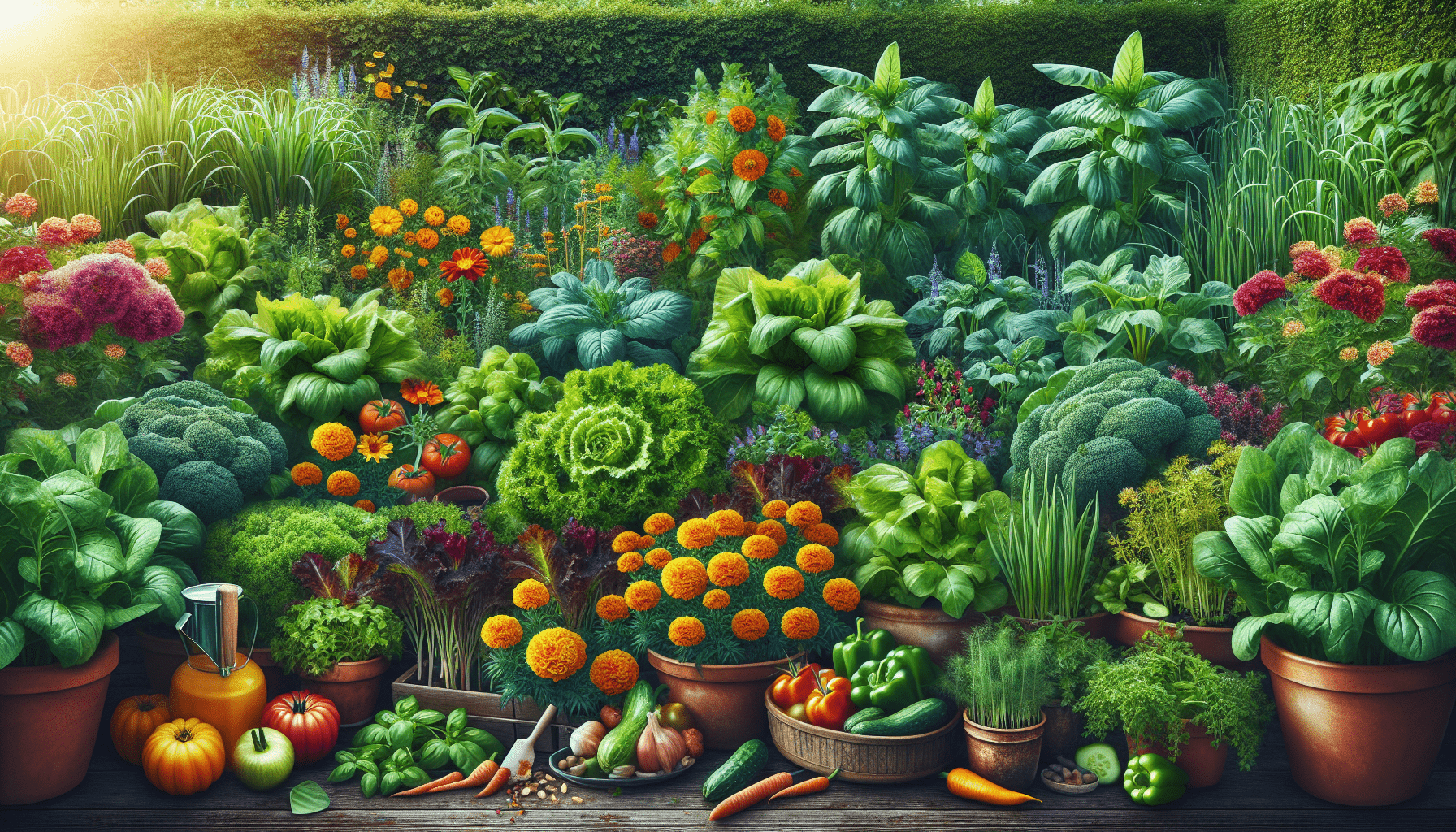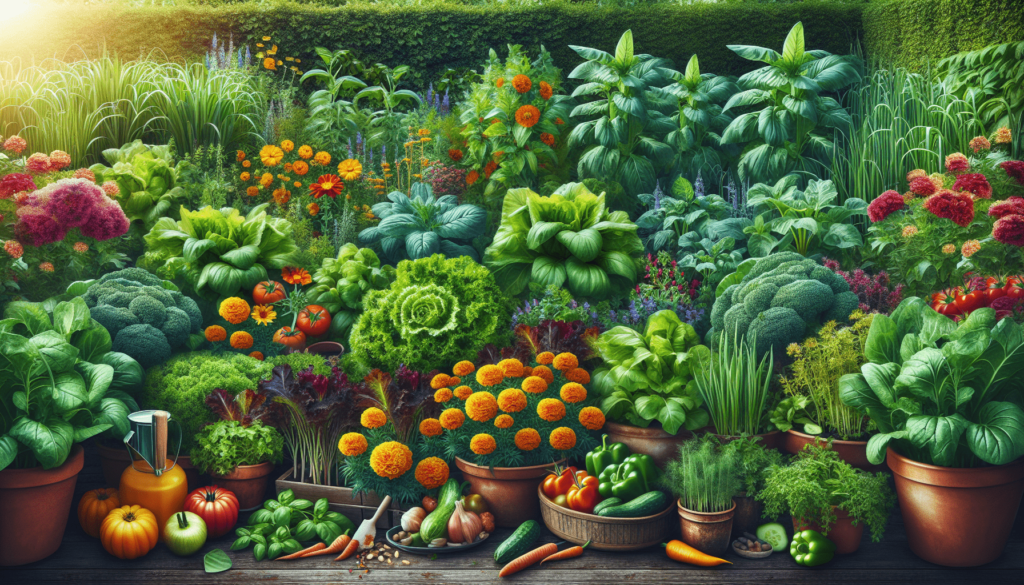
How To Prevent Common Garden Pests Naturally
Welcome to our guide on maintaining a healthy, thriving garden without the use of harsh chemicals. In “How To Prevent Common Garden Pests Naturally,” we will walk you through various practical and eco-friendly methods to protect your plants from pesky invaders. From companion planting to homemade sprays, we’ll explore an array of strategies that will help us create a vibrant garden that’s both sustainable and beautiful. Have you ever wondered how you can protect your garden from pests without resorting to chemical solutions? As passionate gardeners, we all care about the health of our plants and the safety of our environment. Luckily, there are numerous natural methods to keep common garden pests at bay. In this article, we’ll explore some effective, eco-friendly ways to prevent garden pests and ensure our green spaces thrive.
Understanding Common Garden Pests
Before diving into prevention methods, it’s essential to identify common garden pests. Knowing our adversaries can help us take more effective measures against them.
Insects and Bugs
Some insects and bugs can quickly become a nuisance in our gardens. Here are a few we should look out for:
| Pest | Description | Damage |
|---|---|---|
| Aphids | Small, soft-bodied insects in various colors | Suck sap from plants, causing wilting and yellowing |
| Caterpillars | Larvae of butterflies and moths | Chew leaves and stems, creating holes |
| Whiteflies | Tiny, white-winged insects | Cause leaf yellowing and drop |
| Japanese Beetles | Metallic green beetles with copper-brown wings | Skeletonize leaves, damage flowers and fruits |
| Slugs and Snails | Mollusks with soft, slimy bodies | Chew holes in leaves, stems, and flowers |
Mammals and Birds
Some larger creatures can also wreak havoc in our gardens:
| Pest | Description | Damage |
|---|---|---|
| Rabbits | Small mammals with long ears | Eat leaves, fruits, and stems |
| Deer | Large mammals with antlers | Browse on foliage, buds, and stems |
| Birds | Various species, including sparrows and crows | Peck at seeds, fruits, and seedlings |
| Moles and Voles | Small burrowing mammals | Damage roots and create tunnels in soil |
Natural Prevention Methods
The key to natural pest prevention is fostering a healthy ecosystem in our gardens. Let’s explore some practical steps we can take to protect our green spaces naturally.
Encouraging Beneficial Insects
Not all insects are harmful; some can help us keep pest populations in check. By attracting beneficial insects, we create a natural form of pest control.
Ladybugs
Ladybugs are voracious predators of aphids and other soft-bodied pests. We can attract them by planting:
- Marigolds
- Sunflowers
- Calendula
Lacewings
Lacewings feed on aphids, whiteflies, and caterpillars. They are attracted to:
- Dill
- Fennel
- Coriander
Companion Planting
Companion planting involves growing certain plants together to deter pests. Some plants release natural chemicals that repel harmful insects, making them excellent companions.
| Plant | Companion | Benefit |
|---|---|---|
| Basil | Tomatoes, Peppers, Asparagus | Repels mosquitoes and flies |
| Marigold | Beans, Squash, Tomatoes | Repels nematodes, beetles, and other insects |
| Garlic | Roses, Cabbage, Carrots | Repels aphids and Japanese Beetles |
| Nasturtium | Cucumbers, Melons, Radishes | Repels whiteflies and cucumber beetles |
Natural Pesticides
There are several natural substances we can use to create homemade pesticides. These options are safer for our plants and the environment.
Neem Oil
Neem oil is derived from the neem tree and is effective against a wide range of pests. We can mix 1-2 tablespoons of neem oil with a gallon of water and a few drops of dish soap. Spray this mixture on affected plants, ensuring to cover both the tops and bottoms of leaves.
Insecticidal Soap
Insecticidal soap works by dissolving the outer coating of soft-bodied insects. We can make our own by mixing 1 tablespoon of dish soap with a quart of water. Spray the solution directly on pests.
Diatomaceous Earth
Diatomaceous earth is a powder made from fossilized algae. It works by dehydrating insects. Dust it lightly on plants and soil where pests are present.

Routine Garden Maintenance
Regular maintenance practices can prevent pests from becoming a major problem. By keeping our gardens clean and healthy, we reduce the chances of infestation.
Regular Monitoring
By inspecting our plants regularly, we can catch pest problems early. Look for:
- Discolored or deformed leaves
- Chewed edges or holes in leaves
- Presence of insects on plants
Proper Watering Techniques
Overwatering can lead to fungal diseases and attract pests like slugs and snails. We need to water our plants at the base rather than from above to keep foliage dry.
Mulching
Mulching with organic materials like straw or wood chips can help retain moisture, suppress weeds, and create a barrier against pests. It also encourages beneficial soil organisms.
Physical Barriers
Sometimes, we need to take extra measures to protect our plants physically. Using barriers can prevent pests from reaching our precious crops and flowers.
Row Covers
Lightweight row covers can be draped over our plants to protect them from insects while allowing sunlight and moisture to pass through. They are especially useful for:
- Lettuce
- Carrots
- Cabbage
Fencing
Installing a fence can keep larger pests like deer and rabbits out of our garden. A fence should be tall enough to deter jumping animals and buried a few inches into the ground to prevent digging.
Copper Tape
For those of us dealing with slugs and snails, copper tape can create a deterrent. We can place copper tape around the bases of plants or garden beds. The copper reacts with the slime of these pests, creating an unpleasant sensation.

Biological Controls
Biological controls involve using other organisms to control pest populations. This method is both natural and sustainable.
Nematodes
Beneficial nematodes are microscopic worms that target soil-dwelling pests like grubs and cutworms. We can introduce them to our garden by mixing them with water and applying them to the soil.
Bacillus thuringiensis (Bt)
Bt is a naturally occurring bacterium that produces toxins harmful to certain pests. It is especially effective against:
- Caterpillars
- Mosquito larvae
We can apply Bt as a spray, targeting the specific pests causing problems in our gardens.
Creating a Biodiverse Garden
Biodiversity can significantly contribute to pest prevention. By encouraging a variety of plants, animals, and insects, we create a balanced ecosystem that naturally regulates pest populations.
Diverse Plant Selection
Planting a mix of flowers, herbs, and vegetables can attract beneficial insects and birds. A diverse garden is less likely to suffer from pest infestations.
Providing Habitats for Beneficial Animals
Encouraging birds, frogs, and other beneficial animals to visit our gardens can help control pests. We can create habitats by:
- Installing birdhouses or bat houses
- Providing water sources like bird baths or small ponds
- Creating hiding spots with log piles or rock gardens
Conclusion
Preventing common garden pests naturally is achievable with a variety of eco-friendly strategies. By understanding our garden pests, encouraging beneficial insects, utilizing companion planting, and employing natural pesticides, we can protect our plants without harming the environment. Regular maintenance, physical barriers, and biological controls further enhance our efforts. Creating a biodiverse garden is the ultimate way to sustain a healthy ecosystem that keeps pests in balance.
By adopting these methods, we can enjoy thriving gardens, rich with the beauty and bounty of nature. Let’s embrace these natural practices to preserve our green spaces for future generations. Happy gardening!





